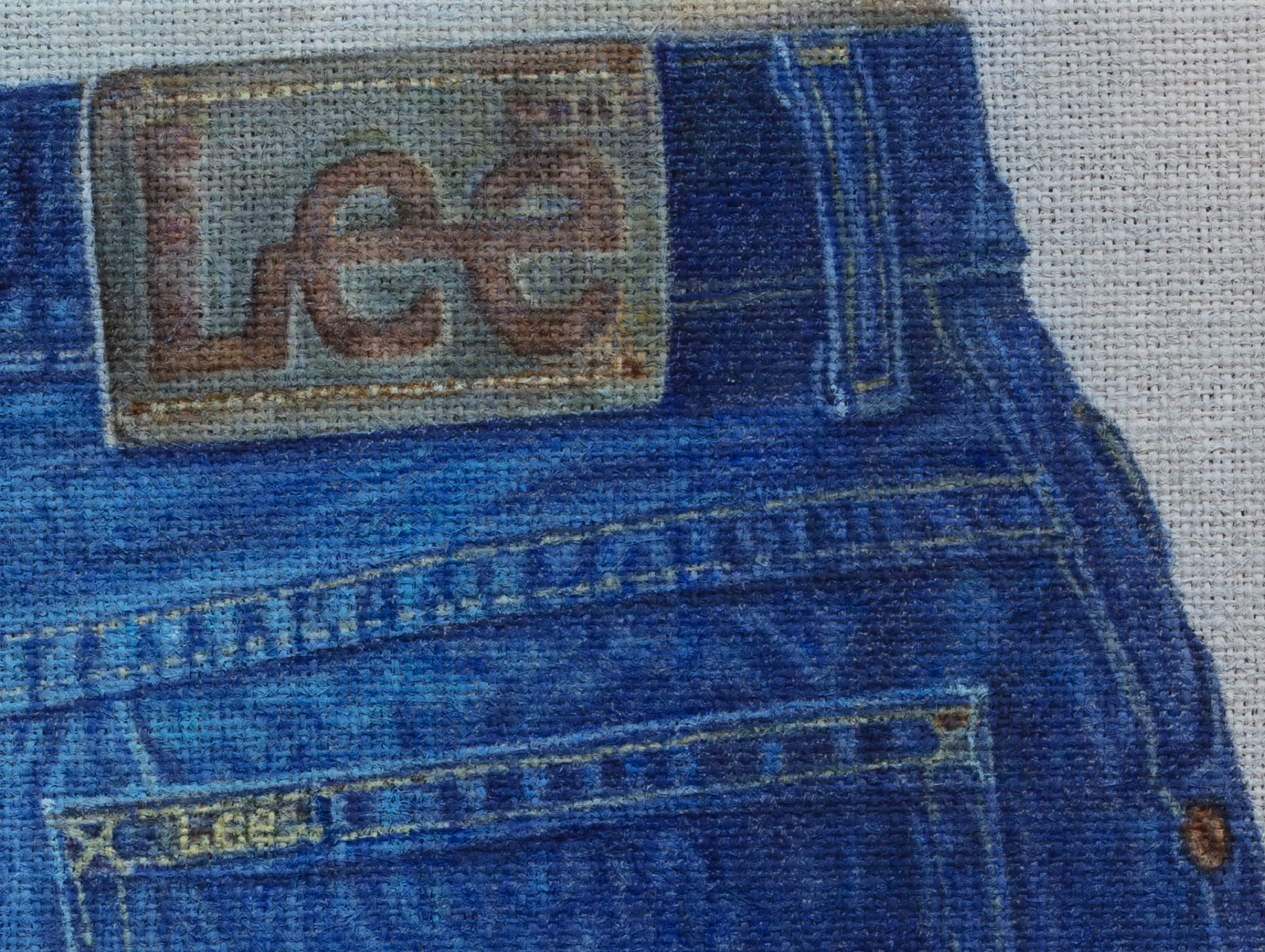
Around 2009, Jesse Krimes was sent to solitary confinement while awaiting trial for a drug charge. He had recently graduated from Millersville University of Pennsylvania with an art degree and spent his first year inside Fairton Federal Correctional Institution making. “The one thing they could not take away or control was my ability to create,” he says.
Like many incarcerated artists, Krimes had to forgo the luxuries of a pristine canvas and set of paints. Instead, he had to be resourceful and utilize the few materials available to him. He began transferring mugshots and small photos printed in The New York Times onto wet remnants of soap bars. He then tucked the blurred, inverse portraits into cut-out decks of playing cards glued together with toothpaste, which created a kind of protective casing that allowed him to smuggle the works out of the facility.

The 292 works became “Purgatory,” which considers how we view criminality and references the unwinnable game of living in a carceral society. Having transferred both photos of people sentenced to prison and celebrities like Naomi Campbell and David Letterman, Krimes points to the ways popularized images can exacerbate power imbalances.
“Purgatory” is currently on view at The Met in Jesse Krimes: Corrections, one of two New York exhibitions of the artist’s work.
Exploring the role of photography in the criminal justice system, Corrections brings together several of Krimes’ large-scale works, including “Apokaluptein: 16389067.” The 40-foot patchwork mural similarly features imagery taken from newspapers that the artist transferred to 39 prison-issue bedsheets using hair gel. Inverted photographic renderings piece together advertisements, snapshots of global strife, and scenes of life from 2010 to 2013, all overlaid with Krimes’ own drawings.
The root of apocalypse, apokaluptein is a Greek word translating to “uncover” and “revelation.” Paired with Krimes’ Bureau of Prisons ID number, the title references mass destruction and the mediated view of the world from inside the justice system.

Following his release, Krimes co-founded the Center for Art and Advocacy, which supports artists directly impacted by the justice system, and continues to collaborate with people who are incarcerated, often seeking help in sourcing materials for his work.
“Naxos,” for example, suspends 9,000 pebbles from prison yards in a vivid installation as a parallel to “Apokaluptein: 16389067” at The Met. And at Jack Shainman Gallery, where Krimes is represented, the artist’s new body of work repurposes clothing gathered from currently and formerly incarcerated people into sweeping tapestries.
Cells features three abstract works of transferred art historical imagery overlaid with sprawling, network-like embroideries. The webbed pattern is based on microscopic images of cancerous cells, which the artist excised to leave only the healthy tissue intact. By removing these malignancies, he creates an intricate metaphor for the ways the justice system extracts people from society while exploring new pathways toward care and redemption.
Part of Krimes’ intent for his practice is to pay homage to those inside. “It is an absolute honor to have works that were created in such an austere and traumatic environment on display,” he said about Corrections. “To show these works highlights much more than the work of an individual artist, namely the collective value, creativity, and dignity of the millions of people currently behind prison walls.”
Cells is on view through December 21 at Jack Shainman Gallery, while Jesse Krimes: Corrections runs through July 13, 2025, at The Met. Find more from Krimes on his website.







Do stories and artists like this matter to you? Become a Colossal Member today and support independent arts publishing for as little as $7 per month. The article Through Monumental Installations of Soap and Stones, Jesse Krimes Interrogates the Prison System appeared first on Colossal.


![[Top 10] Girls Artists From the U.S. in 2023 22 Women Artists From the U.S.](https://artplays.site/wp-content/uploads/2023/02/Women-Artists-From-the-U.S.-cover.webp)
